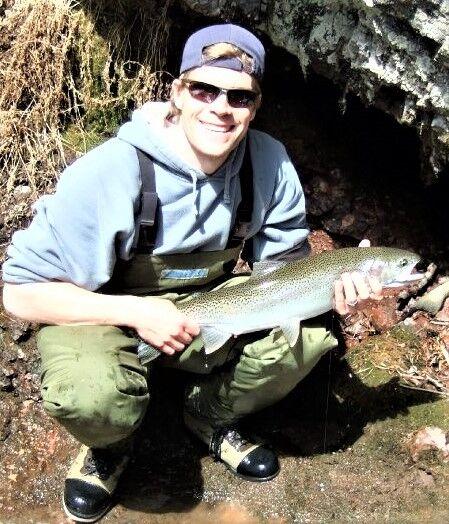
With conditions aligning for early angling opportunities, it is a picture-perfect time to catch some huge spring fish. If you plan to take some photos of your angling success this spring or any time during the openwater season, here are some tips for ensuring a safe release for your subject matter and for getting some quality pictures to detail the event.
Fish handling
Before the fish is even landed, proper care should be shown. Anglers should not over-play a fish, or fight it into complete exhaustion. Like humans, fish get sore from prolonged activity and studies have shown that the buildup of compounds in the fish's body after being caught are similar to those which cause people to get sore after a hard workout. In the case of a walleye or a pike, those buildups can weaken and eventually kill those larger fish already under the strain of spawning rigors.
When landing a fish, it is best to use a net. A gaff is certainly off limits for landing spring fish that are to be released. The best nets are those designed to impact fish as little as possible. A rubberized net does the least damage to a fish's protective slime coat.
Furthermore, pike are notorious for twisting and wrapping a net around their bodies once they have been landed. This gator-roll maneuver results in lost slime and scales.
Rubberized nets prevent this damage and allow for the quick removal of a fish from the net and easier extraction of a hook – even trebles – from the basket.
Once landed, the fish should be kept off the ground or the boat floor to minimize the impact of dirt and dust on slime, gills and eyes and to keep the fish clean for the picture.
Pike and walleye that will be released should not be out of the water for more than 40 seconds. Think of a human venturing into the aquatic world, one breath wouldn't last much longer than that. Acting quickly and knowing how to handle the fish prevents any extra strain on the beast.
When removing a big fish from a net, it should be held in a manner that supports the girth. Place one hand near the head and the other about two-thirds of the way down the body of the fish. A vertical hold should be avoided in the case of extremely large fish, such as pike over 20 pounds or trophy walleye to be released. Fingers can grip the gill-plate, but should never touch the gills - the most sensitive and vital area on a fish. Once a good grip is established, let the shutter fly on the camera.
It's a Snap
It is best to fish with another person at all times, not only for safety, but also so you have someone there to back up your fish stories. However, many cameras offer timer-rigged photo options to help capture the moment while you are by yourself. If you are fishing alone, make sure you know the workings of your camera and the timer function.
When using a camera, especially a digital model, it is important that everyone in the boat knows how the device works. Make sure when using a phone-based camera that both anglers are familiar with the model (ie: Apple versus Samsung) for a quick photo, and any passcodes to open the device are known, or made quickly available. The best idea is to snap a few photos before fishing or use it on smaller fish that you plan to keep. This way the person using the camera becomes familiar with it and can react quickly once a big fish has been landed.
The person taking the picture should make certain that the sun is shining on the front of the subject, as photos where the sun is behind the angler result in pictures where the fish is dark and hidden in shadow. The photographer should take at least one picture, or utilize multiple taps and bursts, or on some phones, live mode, to get the best shot before returning the fish to the water.
Having a pleasant scene in the background is nice, but not as important as a clean release.
If there are some trees or a landscape that compliment the picture, the photographer should take a second or two to line up a shot and direct the angler where to stand. While holding the fish, an angler should keep it slightly away from the body with the two-hand-hold explained above. If holding the gill plate for stability, the angler should grip the inside gill plate, not the one facing the camera, as this breaks up the fish's profile and provides a less ideal shot of the creature.
Once the photo session is complete, the fish should be gently returned to the water. Don't toss or heave the fish back. While releasing the fish, inspect it closely for injury, be certain it can swim under its own power and be make sure it has a good chance of survival.
By following these tips, you'll make a lifetime of quality photo memories and it is quite possible that you or another angler will have the same chance to stand smiling with that fish in front of the shutter next spring or even later this season … in our outdoors.
March 15, 2021 at 09:10PM
https://ift.tt/3qQ5iOU
Our Outdoors: Big fish picture tips | South Dakota Outdoors | capjournal.com - The Capital Journal
https://ift.tt/35JkYuc
Fish
No comments:
Post a Comment